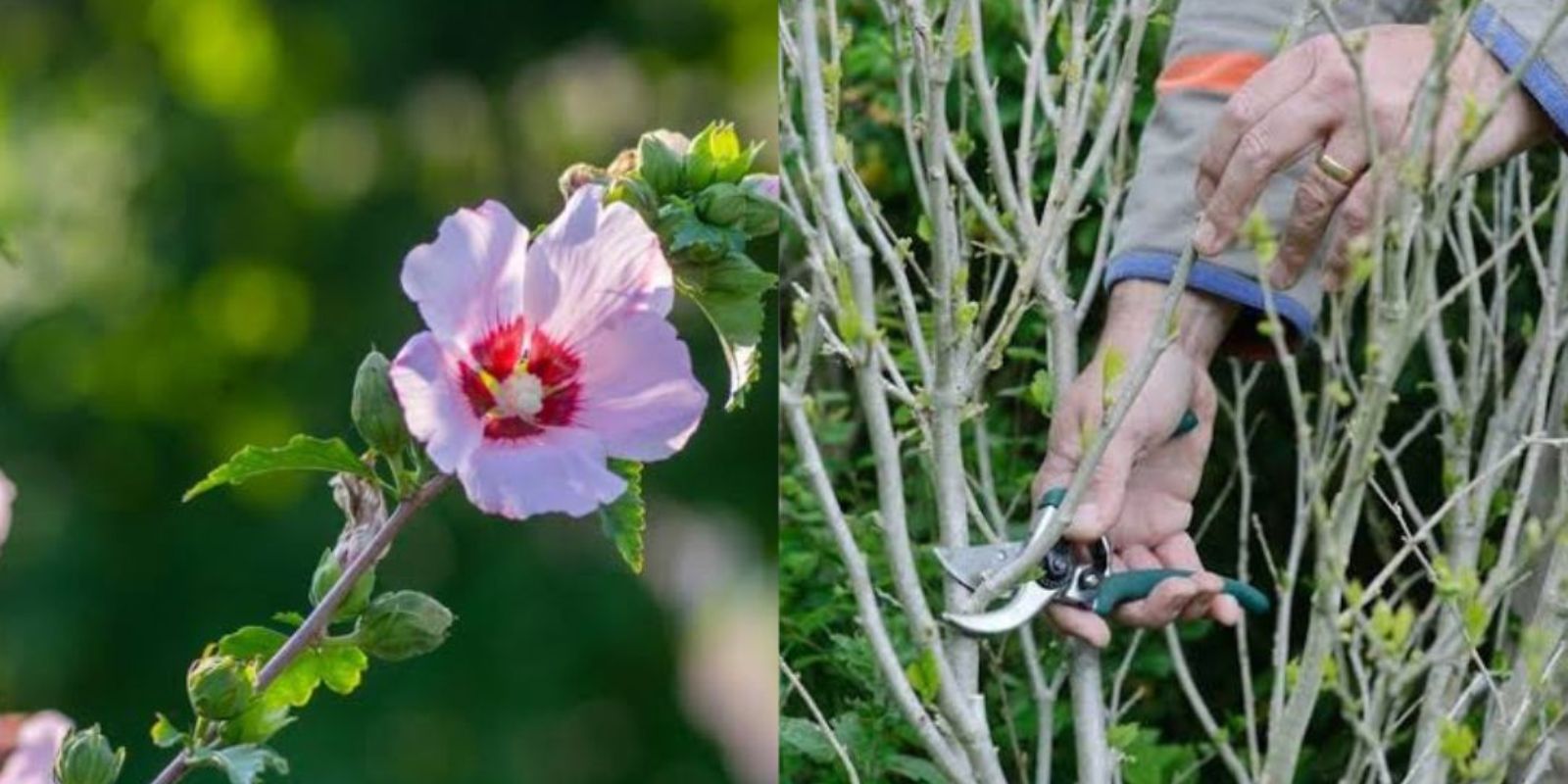Hibiscus Syriacus, commonly known as Rose of Sharon, is a beloved flowering shrub known for its vibrant blooms and hardy nature. Proper pruning is essential to maintain its health, shape, and bloom production. In this comprehensive guide, we’ll delve into the techniques, timing, and care required to prune Hibiscus Syriacus for stunning results.
Why Pruning is Essential
Pruning is more than just a cosmetic task; it plays a crucial role in the health and vitality of your Hibiscus Syriacus. Here are the key benefits:
- Encourages Blooming: Pruning removes dead or weak branches, allowing the plant to focus its energy on producing more flowers.
- Promotes Healthy Growth: Removing damaged or diseased wood prevents the spread of infections and encourages new, robust growth.
- Maintains Shape: Regular pruning keeps your shrub tidy and well-shaped, ensuring it fits seamlessly into your garden design.
- Improves Air Circulation: Thinning out dense areas of the plant allows air to circulate freely, reducing the risk of fungal diseases.
Best Time to Prune Hibiscus Syriacus
The ideal time to prune your Hibiscus Syriacus is in late winter to early spring, before new growth begins. This timing ensures the plant has enough energy stored to support fresh shoots and flowers in the growing season.
Why late winter or early spring?
- The plant is dormant, minimizing stress.
- It’s easier to see the structure of the shrub without leaves, allowing precise cuts.
- New growth will quickly replace pruned branches, leading to abundant flowering.
Tools You’ll Need
Before you begin, gather the right tools for the job to ensure clean cuts and prevent damage to the plant:
- Pruning Shears: For smaller branches.
- Loppers or a Saw: For thicker, older wood.
- Gloves: To protect your hands from sharp branches.
- Disinfectant: To sterilize tools before and after use to prevent disease spread.
Step-by-Step Pruning Instructions
1. Remove Old and Damaged Wood
Start by identifying and removing:
- Dead branches: These are brittle and break easily.
- Damaged branches: Look for cracks, splits, or signs of disease.
- Weak or crossing branches: Thin out weaker branches that rub against others to prevent damage.
Use sharp tools to make clean cuts just above a healthy bud or branch junction.
2. Shape the Plant
Prune to achieve a balanced and aesthetically pleasing shape.
- Remove up to one-third of the old wood to promote fresh growth.
- Focus on creating an open structure with evenly spaced branches to improve air circulation.
When shaping, always cut above an outward-facing bud to encourage growth away from the center of the plant.
3. Mind the Blooms
Hibiscus Syriacus forms its flower buds on old wood, so avoid excessive pruning. Over-pruning can lead to fewer blooms.
- Retain strong, healthy branches that show signs of last year’s growth.
- If in doubt, trim lightly rather than aggressively.
4. Perfect Your Cutting Technique
Good pruning technique ensures the plant heals quickly and minimizes stress.
- Make cuts at a slight angle to prevent water from pooling on the cut surface.
- Avoid cutting too close to the bud, as this can damage it.
Post-Pruning Care
Once you’ve finished pruning, follow these steps to help your Hibiscus Syriacus recover and thrive:
- Watering: Give the plant a thorough watering to support new growth.
- Mulching: Apply a layer of mulch around the base of the plant to retain moisture and regulate soil temperature.
- Fertilizing: Feed the plant with a balanced fertilizer in early spring to boost flowering and overall health.
Common Pruning Mistakes to Avoid
- Pruning Too Late: Cutting back branches after new growth has started can weaken the plant and reduce flowering.
- Over-Pruning: Removing too much old wood can lead to sparse blooms.
- Dull Tools: Using blunt tools can crush branches instead of making clean cuts, leaving the plant vulnerable to infections.
Hibiscus Syriacus Pruning FAQ
Q: Can I prune my Hibiscus Syriacus in summer?
A: Light pruning can be done in summer to remove spent flowers or tidy up the plant. However, avoid heavy pruning during the growing season as this can stress the plant.
Q: How can I identify old wood?
A: Old wood tends to be thicker, darker, and more rigid than new growth. It may also show signs of previous flowering.
Q: What should I do if my plant hasn’t been pruned in years?
A: For overgrown plants, prune gradually over two to three years, removing one-third of the old wood each year to avoid shocking the plant.
Additional Tips for Success
- Monitor for Pests and Diseases: Regularly inspect the plant for signs of aphids, whiteflies, or fungal infections.
- Protect in Winter: In regions with harsh winters, use a protective covering to shield the plant from frost damage.
- Train Young Plants: Shape young Hibiscus Syriacus shrubs early to establish a strong framework.
Conclusion
Pruning Hibiscus Syriacus is a simple yet rewarding task that can transform your plant into a vibrant garden centerpiece. With proper timing, tools, and technique, you’ll enjoy healthy growth, improved shape, and an abundance of beautiful blooms.
Try these steps on your Hibiscus Syriacus and share your experience with us! Let us know your favorite gardening tips or post photos of your results.
#GardeningTips #HibiscusCare #PruningMadeEasy #FlowerGarden #GreenThumbGoals

